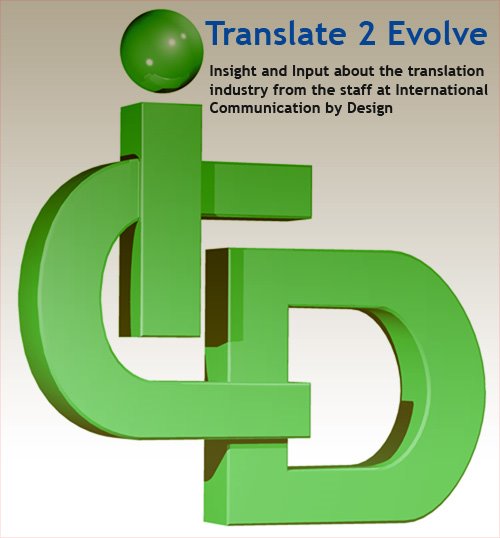Google has added a toolkit to their machine translation software: "Google Translate"
How does it work?
* Choose a language to translate your document into
* Upload a document, webpage or a Wikipedia article
* Google translator automatically uploads, converts and translates the content
* You can now review and improve the translation
* You can view translations that were earlier translated by other users
* You can share your translation with your friends and invite them to view or help edit your translation
* When finished, you can download the translation to your desktop
* For Wikipedia articles, you can even publish it back to the source
Now, the system works well as a crowdsourcing effort where revisions are constantly made to the translations. Thus, improving quality over time. The intellectual prowess of the translator is another questions.
The Toolkit represents another step in the advancement of machine translation. However, it still does not replace a qualified human translator with industry specialization.
Google Translator Toolkit is ideal for fast simple, non-conforming translations. If you want a 50 page manual, then you're better off sending it to your translation vendor.
Showing posts with label google translate. Show all posts
Showing posts with label google translate. Show all posts
Thursday, March 11, 2010
Monday, January 11, 2010
Trados Fun
A few tips on how to manipulate tags in Trados:
When dealing with files that have a lot of formatting tags, there are two possible ways to deal with it in Trados Tag Editor:
1. The simpler more time consuming step:
Copy the source everytime, and then translate in between the tags (overwriting the English source text). Doing this will eliminate the need to copy all the tags all the time.
2. The more technical less time consuming step:
Tags can be protected and unprotected in TagEditor. When dealing with so many tags it might be handy to "unprotect" the internal tags (Tools>Options>Protection>Protect External Tags only). Now you can simply copy and paste tags, delete them etc..
Try it out and let me know.
When dealing with files that have a lot of formatting tags, there are two possible ways to deal with it in Trados Tag Editor:
1. The simpler more time consuming step:
Copy the source everytime, and then translate in between the tags (overwriting the English source text). Doing this will eliminate the need to copy all the tags all the time.
2. The more technical less time consuming step:
Tags can be protected and unprotected in TagEditor. When dealing with so many tags it might be handy to "unprotect" the internal tags (Tools>Options>Protection>Protect External Tags only). Now you can simply copy and paste tags, delete them etc..
Try it out and let me know.
Wednesday, February 25, 2009
How to Tango with Lingo

The ICD production room heats up every time there are files that are incompatible with SDLX™ or Trados™ . We have to find a work around, and it's usually more complicated or costly. Fortunately, the guys at MadCap Software™ decided to create Lingo that allows translation companies to work with files created by Flare™ and Blaze™ (MadCap's help file software). They were thinking ahead instead of waiting for SDLX or Trados to come up with a filter.
What it basically does is allow a translator to translate content from Flare into an SDLX environment without using SDLX. So you get the SDLX translation environment (left column source language segments/ right column target language segments) in Lingo, and it also allows you to create a translation memory for content reuse, and a TMX (Translation Memory eXchange) so you can import/export the file to SDLX or other translation tools. It also eliminates the problem of content transfer or extraction from a Madcap program into another software program. What it does not do is analyze the files for repeat content (saving you money), and build a memory from previously translated files.
One more thing, Lingo does not translate the content for you. Automated translations like Google translate are crappy and only work for very simple sentences or independent words. Technical terms and sentences with context value are usually inaccurate with automated translations. Therefore, if you are using Flare or Blaze, you can acquire Lingo, import the Flare or Blaze file, export your content as a TMX, and send the TMX file to the translation company. They'll analyze the file and translate the TMX. You get a translated TMX back, you import it in Lingo and you have a translated help file.
Well, thank you MadCap for thinking ahead, and reducing the stress for all of us in the translation and localization business.
Subscribe to:
Posts (Atom)

